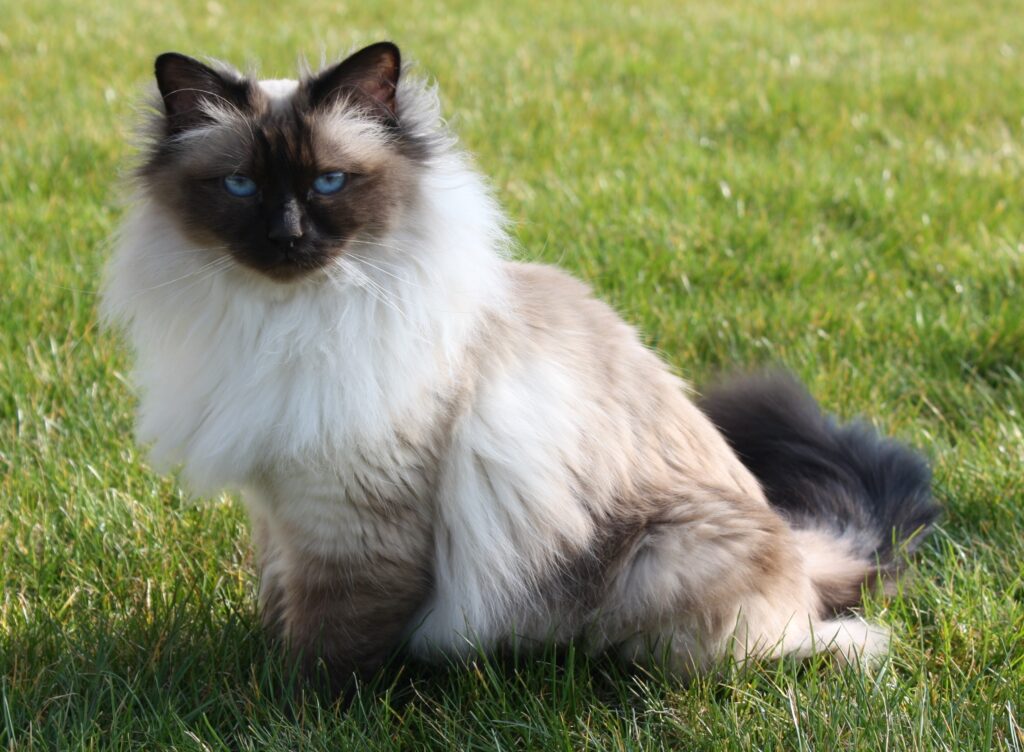The Birman is a semi-longhaired domestic cat, distinguished by its silky coat with coloured points, deep sapphire blue eyes, and contrasting white paws. Birmans are relatively heavily boned, with rectangular muscular bodies and can be medium to large in size.
They have a broad skull giving them the appearance of a rounded face and have neat medium-sized ears and beautiful blue eyes. The fur of the Birman is medium-long and has a silky texture. They have no undercoat, making the coat easy to care for and less prone to matting.

Description and Characteristics
The coat colour is typically a pale cream and always pointed, with the exception of the four white ‘mitted’ feet, a trademark of the breed. The recognised point colours are seal, chocolate, blue, lilac, red, and cream, with some tabby and tortie variations in seal, chocolate, blue and lilac. The Birman is generally a friendly, sweet-natured and relaxed cat which loves human company. Much of the time, they will be very content to simply be around their owners, either curled up on a lap or close by. They are not high-energy cats, although they do still enjoy playing and like to be on the receiving end of the attention. As calm and sociable cats, they tend to get along with with other cats and dogs, particularly with good early socialisation and gentle introductions. Birmans aren’t noisy cats but do like to chat, with gentle vocalisations. Despite their glamorous coat, they are not overly high-maintenance and only require grooming about once a week.
The history of the Birman cat is unclear, although they are believed to have originated in Burma (which is now Myanmar), where they were companions of temple priests. According to legend, when a priest died, his spirit flowed into his loyal cat before moving on to the next life, which may explain why this breed is also known as Birmans as the ‘Sacred Cat of Burma’. The breed name is derived from ‘birmanie’, the French form of Burma, although it is unclear how the breed originally arrived in France. By 1925, it was officially recognised in France, with recognition in England coming in1966.
Health and common issues
Birmans are generally healthy cats. However, they can still be prone to certain health conditions including hypertrophic cardiomyopathy (HCM) which causes the walls of the heart to thicken reducing the volume of blood within the heart and preventing the heart muscle from relaxing properly between contractions. There are HCM-testing schemes available, which involve genetic testing and/or regular heart scanning). They can also be prone to polycystic kidney disease (PKD), a disease that forms cysts in the cat’s kidney, causing organ failure. PKD can be detected through genetic testing or ultrasound and responsible breeder will screen their cats. Feline audiogenic reflex seizures (FARS), a recently discovered type of epilepsy in cats, is believed to be more common in Birman cats than in other breeds. Additionally, there is some evidence of impaired kidney function in young Birman cats which could lead to the development of kidney disease.






